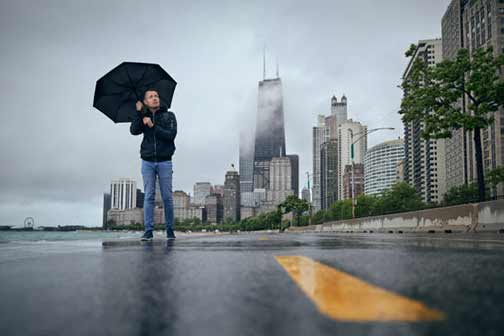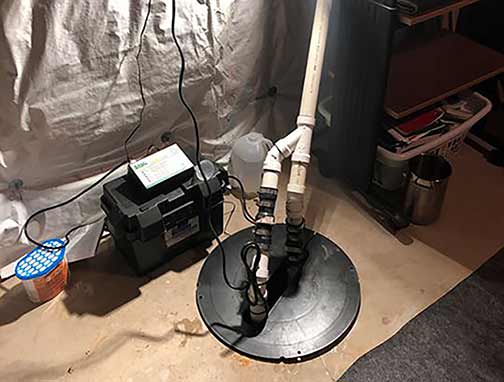
For people who live in Chicago, summer means both sunshine and rain. Summer temperatures in the city can rise above 80 °F (around 29°C – 30 °C). These high temperatures coincide with the months when Chicago also has its heaviest amount of rainfall.
The rainy season in Chicago always presents major challenges for homeowners in the city, notes 1907 Property Management. If there are existing drainage issues in a home, this is when those problems are likely to flare up, causing severe water damage to the house.
Some of the problems that can happen in Chicago homes at this time of the year include:
Basement flooding
This happens either as a result of failures in the city’s sewer system or poorly maintained drainage systems in the home. Chicago uses a combined sewer system. This means that the municipal sewer carries both sewage from homes and stormwater.
During heavy rainfall, the sewer system can flood, causing its contents to back up into private sewer systems. If this happens, homeowners in the affected areas may experience sewage backup in their homes, especially inside the basement.
Basement flooding also happens because of badly maintained rainfall management systems on the property. Instead of channeling runoff away from the house, these can divert water onto a building and its surroundings, leading to basement flooding.
Water damage
At no time of the year are Chicago homes more vulnerable to water damage than during the summer months. If there are existing weaknesses in the walls and foundations of a house, they will be exposed by heavy rainfall, combined with high temperatures.
Moisture can infiltrate the home from these weak spots, wreaking havoc on its structural integrity. The result is weakened walls or flooring and foundation damage. Moisture infiltration into buildings can also encourage the growth of mold and mildew.
Health challenges
Basement flooding due to overflowing sewer systems exposes homes to a host of harmful bacteria. These problems don’t go away after the basement flooding issue is dealt with. Bacteria can linger inside the house for months, subjecting the occupants to various health issues.
Mold and mildew growth from moisture infiltration into the structures of a building also presents health challenges of its own. Mold gases and spores can cause and worsen respiratory issues among the members of a household. These problems affect children and elderly folks the most.

Plumbing tips to protect your Chicago home this season
Sump pump maintenance
Every Chicago home with a basement should have a sump pump installed in the basement. However, the mere presence of a sump pump does not mean the house is safe from basement flooding. Sometimes sump pumps fail without the owner knowing it.
To ensure that this doesn’t happen to you, it is essential to have an established routine for testing and maintaining your sump pump at specific intervals, especially at the beginning of every season. Testing a sump is not hard at all; almost anyone can do it if they know how.
In addition to keeping your sump pump in good working condition, you may need to install a battery-powered backup sump pump. This is to ensure that in the event of blackouts during a heavy storm, your home will not be without the services of a basement sump pump.
Adequate drainage management
This begins with ensuring that the area around your home slopes away from your house. If the soil around your home is properly graded, runoff will naturally flow away from the house instead of toward it. For proper yard drainage, this step is not negotiable.
Secondly, ensure that gutters and downspouts are clog-free and in good physical condition. If gutters are broken or clogged with debris, they may discharge water onto the walls of your home. Ensure that the downspout is discharging water in a safe place on your property.
If there is an area in the yard where water pools constantly, it can benefit from a French drain. French drain installation is a simple but effective solution for draining waterlogged soil without impairing the aesthetics of your yard. They are cheap to install, and the work can be done in one day.
Install a backwater valve
A backwater valve, also known as a sewer backup valve or backflow valve, protects your home from sewage backup resulting from overflows in the city sewer system. This problem is largely out of your control, and you cannot predict it.
The only way to ensure that whatever goes wrong in the city sewer systems does not ripple backward into your home is to install a backwater valve. A backwater valve will shut your home’s sewer line if it senses a reversal in the flow of water inside the line.
Lastly, it is worthwhile to have a plumber do a comprehensive inspection of your home’s plumbing every year or at the start of the summer season. This detailed inspection will reveal hidden plumbing issues, allowing you to address them before they become major problems.

